Research
Aggregation and degradation of dispersants and oil by microbial exopolymers (ADDOMEx)
Depts. of Marine Biology and Marine Science, TAMUG
Dept. of Oceanography and the Geochemical and Environmental Research Group, TAMU
 ADDOMEx is a group of researchers that is funded by the Gulf of Mexico Research Initiative to investigate the impacts of spilled oil and dispersants on the formation of an extracellular matrix called EPS (exopolymeric substances) formed by marine microbes. EPS is thought to be instrumental in determining the fate of oil as it can aid in the formation of marine snow. The marine snow formed by these exopolymers can aid in the removal of oil droplets from the water column thus aiding the self-cleansing capacity of natural waters. Current research involves the inoculation of large tanks (mesocosms) with microbial communities collected from the Gulf. Each mesocosm is treated with oil and/or dispersants and the inoculated microbial communities are allowed to grow, and depending on conditions, form aggregates; subsamples of the communities and the aggregates are taken every 8 to 24 hours for several days. Samples are continuously being analyzed by ADDOMEx researchers and results are instrumental in directing future work and fine tuning of various protocols that are used. Future work in the Sea Life Facility will included both ongoing use of the the mesocosms, as well as experiments that will measure the formation of aggregates in cylindrical tanks that are continuously rolled to simulate ocean mixing. For more information about ADDOMEx, please visit https://www.tamug.edu/phytoplankton/projects/addomex/.
ADDOMEx is a group of researchers that is funded by the Gulf of Mexico Research Initiative to investigate the impacts of spilled oil and dispersants on the formation of an extracellular matrix called EPS (exopolymeric substances) formed by marine microbes. EPS is thought to be instrumental in determining the fate of oil as it can aid in the formation of marine snow. The marine snow formed by these exopolymers can aid in the removal of oil droplets from the water column thus aiding the self-cleansing capacity of natural waters. Current research involves the inoculation of large tanks (mesocosms) with microbial communities collected from the Gulf. Each mesocosm is treated with oil and/or dispersants and the inoculated microbial communities are allowed to grow, and depending on conditions, form aggregates; subsamples of the communities and the aggregates are taken every 8 to 24 hours for several days. Samples are continuously being analyzed by ADDOMEx researchers and results are instrumental in directing future work and fine tuning of various protocols that are used. Future work in the Sea Life Facility will included both ongoing use of the the mesocosms, as well as experiments that will measure the formation of aggregates in cylindrical tanks that are continuously rolled to simulate ocean mixing. For more information about ADDOMEx, please visit https://www.tamug.edu/phytoplankton/projects/addomex/.
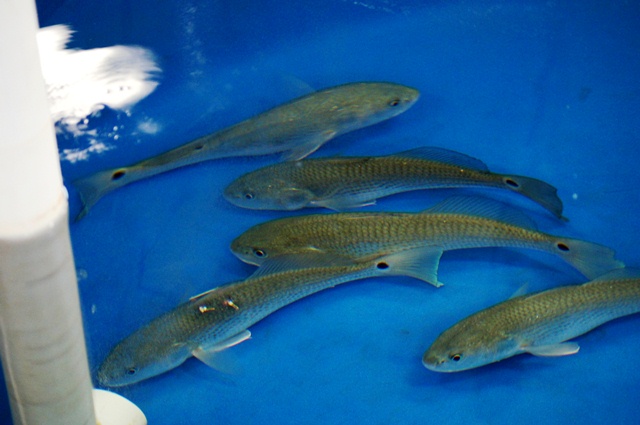 Movement and habitat connectivity of estuarine fishes
Movement and habitat connectivity of estuarine fishes
Larissa Kitchens, Ph.D. Student, Dept. of Wildlife and Fisheries Sciences, TAMU
Atlantic croaker (Micropogonias undulatus) and red drum (Sciaenops ocellatus) are economically and ecologically important species that reside in Texas estuaries. Little is know regarding habitat use of these species, although identification of essential fish habitat is required for effective management. Dietary tracers will be evaluated as a potential indicator of movement and habitat connectivity.
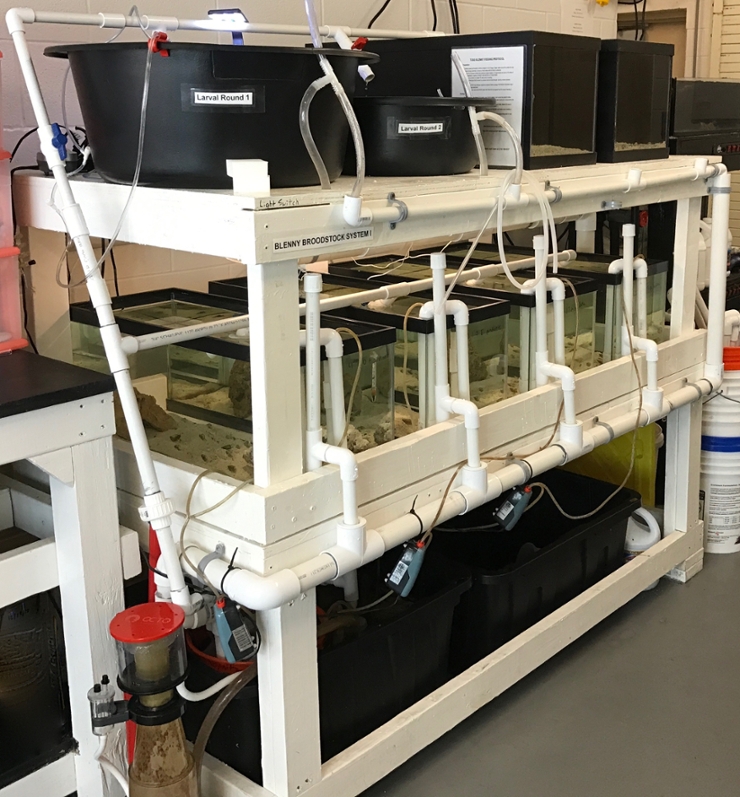 The genetics of hybrid breakdown in Neotropical fishes
The genetics of hybrid breakdown in Neotropical fishes
Josh Carter, Masters Student, Dept. of Marine Biology, TAMUG MARB-IDP
Proteins encoded in the mitochondrial genome directly interact with nuclear-encoded proteins. Gene products from each genome must be able to work properly with each other, or organismal breakdown will occur. Given their high rate of mitochondrial evolution, Acanthemblemaria is an ideal study group to answer whether hybrid fitness suffers due to poor interactions between mismatched mitochondrial and muclear genomes. Currently, we are performing tests for hybrid breakdown of the offspring of crosses between different Caribbean populations of these fishes.
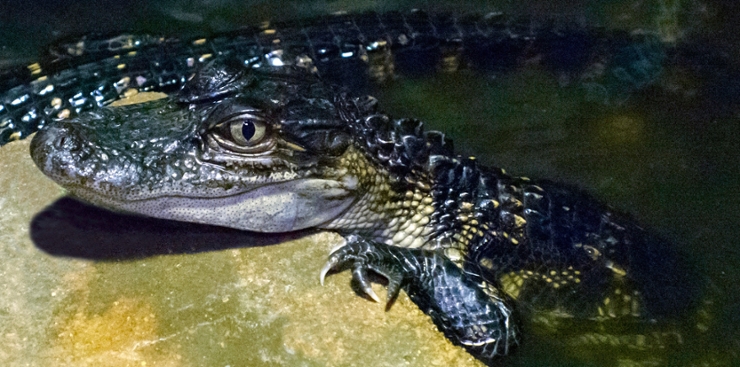 Determining cardiac health in juvenile American alligators (Alligator mississippiensis) exposed to salinity stress
Determining cardiac health in juvenile American alligators (Alligator mississippiensis) exposed to salinity stress
Lene Petersen, Ph.D., Instructional Assistant Professor, Dept. of Marine Biology, TAMUG
Patricia Faulkner, Masters Student, Dept. of Marine Biology, TAMUG MARB-IDP
It has been documented that storm surges from tropical events kill thousands of juvenile alligators and it is predicted that changes in habitat, sea level rise and increased frequency and intensity of hurricanes to due to a rise in sea surface water temperature will increase the frequency of saltwater inudation in freshwater wetlands. This study will examine the effects of high salinity on juvenile alligator cardiovascular physiology and metabolism to determine the underlying physiological mechanisms behind high mortality of alligators in the wild. It is currently not known what physiological changes occur during high salinity stress in alligators. The ultimate goal is to identify certain "biomarkers" that we can use as landmarks to determine the health status of alligators in the wild. Biomarkers should be hormones that can easily be obtained in a blood sample and ideally be hormones predictive of cardiac and metabolic health status. The identification of biomarkers will negate the necessity to lethally sample alligators in the wild to assess health status. This project has wide applications for wildlife management as it provides fast and reliable methods to assess the well-being of animals in the field or zoos/aquaria.
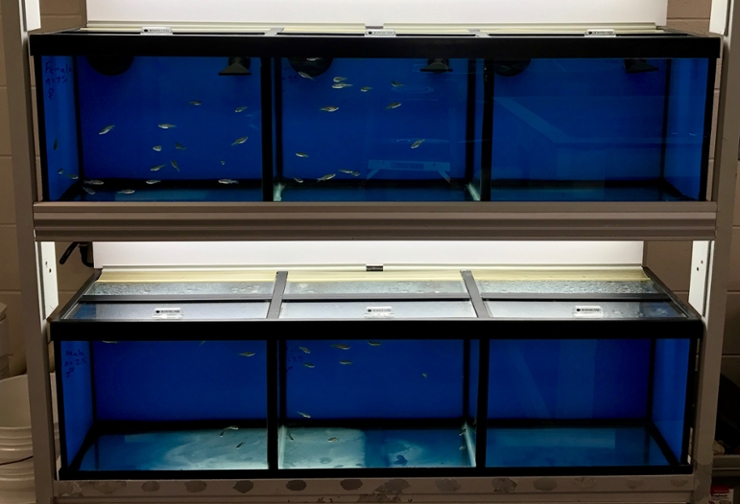 Altered gene-regulatory networks in fish under stress
Altered gene-regulatory networks in fish under stress
David Hala, Ph.D., Assistant Professor, Dept. of Marine Biology, TAMUG
Coastal ecosystems are susceptible to oil discharges and encroaching (annual) hypoxia zones. Furthermore, combined exposure to hydrocarbon contaminants and hypoxia can synergistically interact and compound adverse health effects in resident aquatic organisms (such as fish). At present, the mechanisms of such interactions are not fully characterized and are suspected to involve significant gene-to-gene interactions and subsequent alteration in metabolite productions. This study will identify the mechanisms of how such environmentally relevant stressors interact to alter the health of juvenile and adult fish. Using zebrafish (Danio rerio) as a model organism, we will explore how exposure to separate or combined stressors alters gene expression and metabolite production in stressed fish. Our analysis will enable the discovery of stress-response genes and metabolites that are diagnostically altered under single or combined stressor exposure. Finally, our work will lay the foundations for the study and identification of other sensitive and ecologically valuable Gulf of Mexico fish species.
The zebrafish represents a fully sequenced model organism with detailed annotation of up to 30,741 genes (GRCz10 annotation, NCBI, October 2014). Zebrafish also exhibit a high degree of conservation in its genome organization and biochemistry with humans and other environmentally representative vertebrate fish species. This makes it an ideal model organism for studying the effects of environmental stressors on gene function and metabolite production.
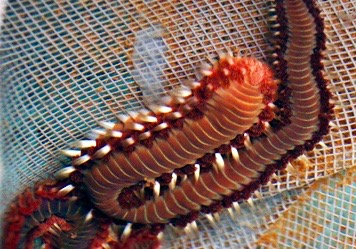 Gene expression profiles in response to low dissolved oxygen in the bearded fireworm, Hermodice carunculata
Gene expression profiles in response to low dissolved oxygen in the bearded fireworm, Hermodice carunculata
Anja Schulze, Ph.D., Associate Professor, Dept. of Marine Biology, TAMUG
Oxygen plays a key role in the metabolic processes of most organisms. In the marine environment, levels of dissolved oxygen (DO) can vary greatly over space and time and are a major factor in shaping biological communities. The bearded fireworm, Hermodice carunculata, is a common species of amphinomid polychaete throughout the Atlantic Ocean and its adjacent basins. H. carunculata inhabits shallow-water reef, rocky and coarse sediment habitats and reaches particularly high densities in areas where microbial decomposition depletes oxygen, such as coral-algae interfaces and fish farm outfalls. It is an omnivore which can cause damage to certain corals by direct feeding and as a vector to coral diseases. Because of its ecological importance, its common occurrence, wide geographic distribution, tolerance to low DO, and ease of collection and maintenance in culture, H. carunculata can serve as a model species to examine molecular and organismal responses to low DO.
MARB 423. Mariculture. (3-3). Credit 4
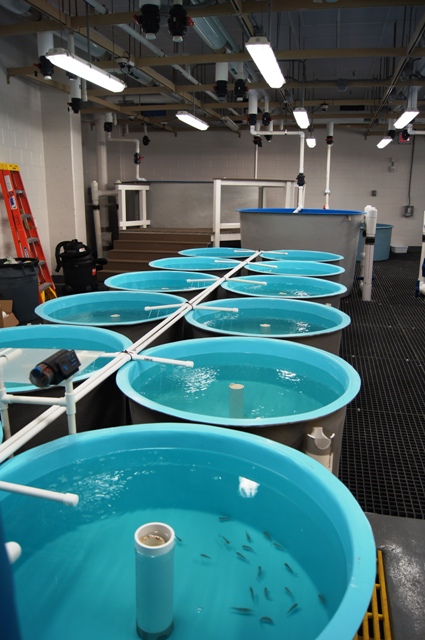 Study of factors determining the success of efforts to cultivate estuarine and marine species of economic importance. Mariculture practices used worldwide in the production of algae, mollusks, crustaceans, and fishes will be discuessed. Prerequisite: Junior or senior classification or approval of instructor.
Study of factors determining the success of efforts to cultivate estuarine and marine species of economic importance. Mariculture practices used worldwide in the production of algae, mollusks, crustaceans, and fishes will be discuessed. Prerequisite: Junior or senior classification or approval of instructor.The SLF offers students taking the Mariculture (MARB 423) course the opportunity to learn techniques for the cultivation of marine and brackish fish species. The 12-tank closed recirculating system available to the students enables them to have a "hands-on" learning experience.
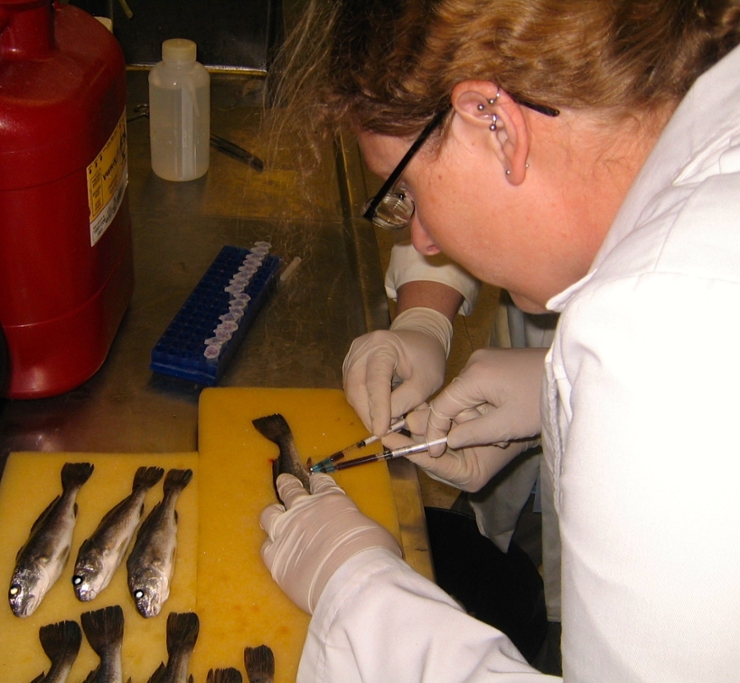 Role of iodine and thyroid stimulating hormone in red drum (Sciaenops ocellatus)
Role of iodine and thyroid stimulating hormone in red drum (Sciaenops ocellatus)
Allison Wilkes, Ph.D. Student, Dept. of Biology, TAMU
This experiment will research the role of iodine and thyroid stimulating hormone on thyroid tissue in red drum and determine if food, iodine supplementation and water parameters influence iodine uptake. Two feeding trials are running simultaneously: one in the SLF and one in the animal holding facilities at TAMU. Previous research has shown that fish held in low salinity, artificial sea water will become insensitive to injections of recombinant bovine thyroid stimulating hormone (bTSH), indicating possible hypo-thyroidism. By raising red drum in the natural seawater in the SLF, effects of different water parameters on thyroid response may be determined.
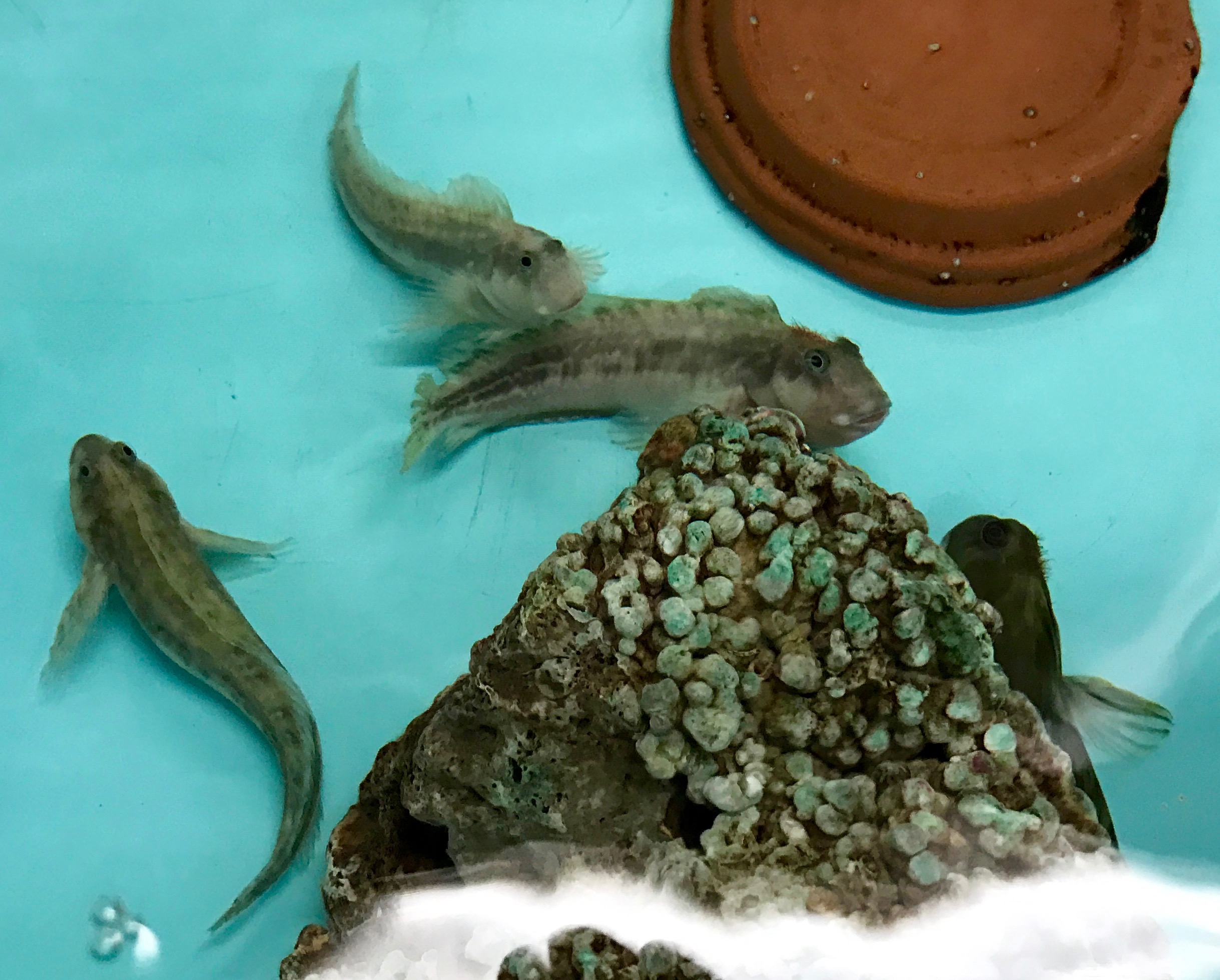 Alternative larval diets and generational time for Gulf of Mexico blenny species
Alternative larval diets and generational time for Gulf of Mexico blenny species
Fred Shopnitz, Undergraduate Research Scholar, Dept. of Marine Biology, TAMUG
This study assessed alternative larval diets for Molly miller blennies (Scartella cristata) in order to determine if these new diet items are more effective than commonly accepted diets. Additionally, larval blennies were raised to maturity to determine the age of maturation. The results of this project provided critical information that will enable aquaculturists to breed and raise this species in captivity.